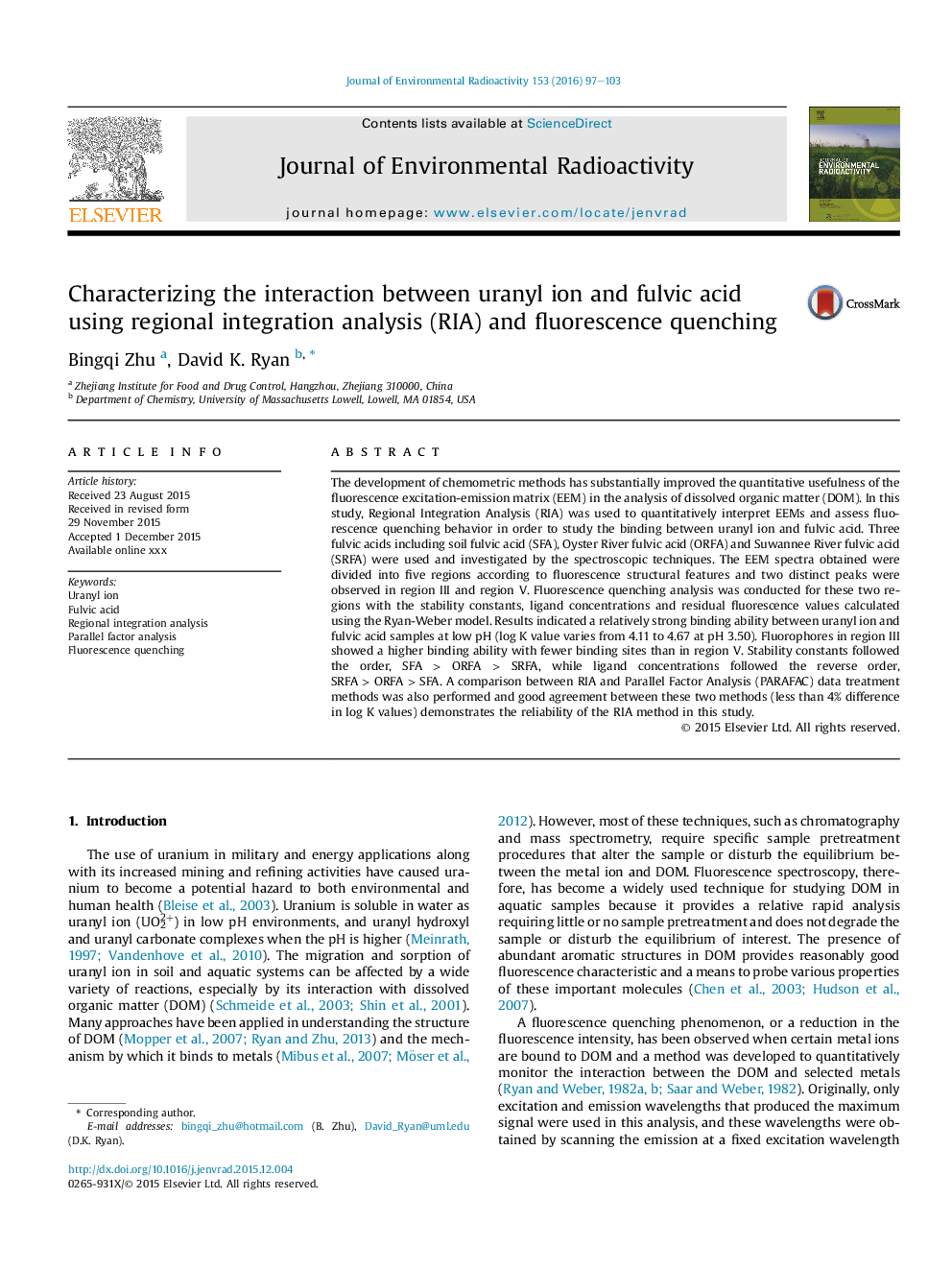| Article ID | Journal | Published Year | Pages | File Type |
|---|---|---|---|---|
| 8082009 | Journal of Environmental Radioactivity | 2016 | 7 Pages |
Abstract
The development of chemometric methods has substantially improved the quantitative usefulness of the fluorescence excitation-emission matrix (EEM) in the analysis of dissolved organic matter (DOM). In this study, Regional Integration Analysis (RIA) was used to quantitatively interpret EEMs and assess fluorescence quenching behavior in order to study the binding between uranyl ion and fulvic acid. Three fulvic acids including soil fulvic acid (SFA), Oyster River fulvic acid (ORFA) and Suwannee River fulvic acid (SRFA) were used and investigated by the spectroscopic techniques. The EEM spectra obtained were divided into five regions according to fluorescence structural features and two distinct peaks were observed in region III and region V. Fluorescence quenching analysis was conducted for these two regions with the stability constants, ligand concentrations and residual fluorescence values calculated using the Ryan-Weber model. Results indicated a relatively strong binding ability between uranyl ion and fulvic acid samples at low pH (log K value varies from 4.11 to 4.67Â at pH 3.50). Fluorophores in region III showed a higher binding ability with fewer binding sites than in region V. Stability constants followed the order, SFAÂ >Â ORFAÂ >Â SRFA, while ligand concentrations followed the reverse order, SRFAÂ >Â ORFAÂ >Â SFA. A comparison between RIA and Parallel Factor Analysis (PARAFAC) data treatment methods was also performed and good agreement between these two methods (less than 4% difference in log K values) demonstrates the reliability of the RIA method in this study.
Related Topics
Physical Sciences and Engineering
Energy
Nuclear Energy and Engineering
Authors
Bingqi Zhu, David K. Ryan,
